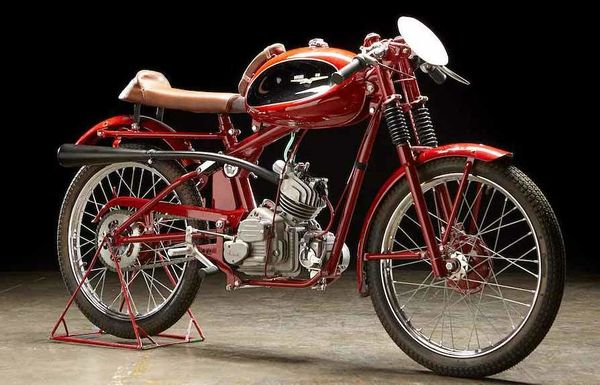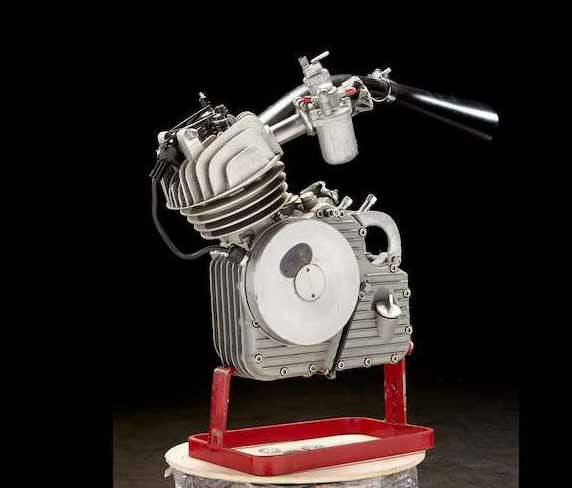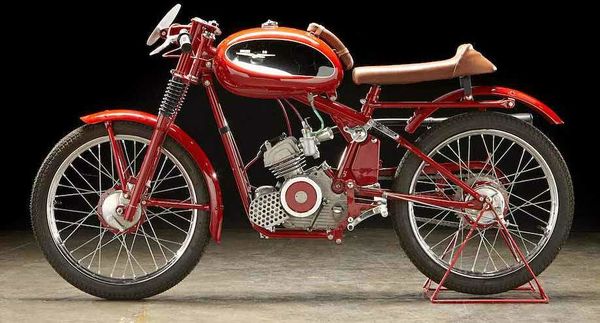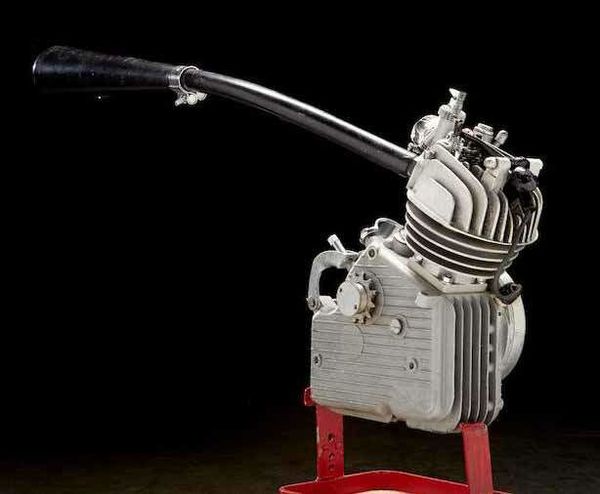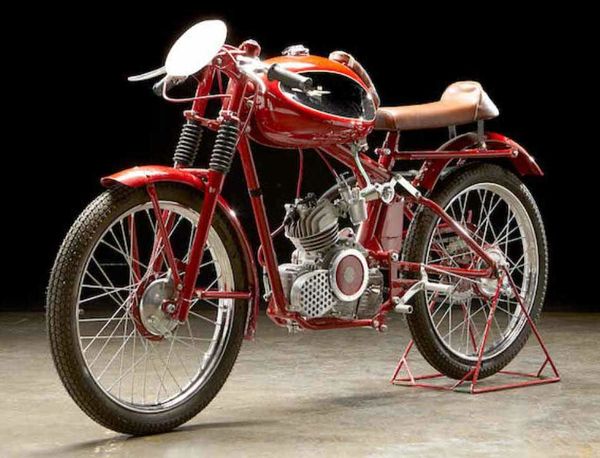Ducati 60 Racer
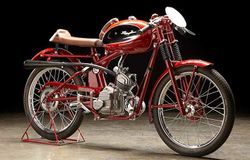 |
|
| Racing Bikes Ducati 60 Racer | |
| Class | Racing |
|---|---|
| Weight | |
| Manuals | Service Manual |
Photos[edit | edit source]
Overview[edit | edit source]
Ducati 60 Racer 1952
Introduced in 1946, Bologna-based Ducati's first motorcycle
product was the Cucciolo ('little pup') a 48cc auxiliary
engine designed for bicycle attachment - derivatives of which
would still be powering its lightweight offerings some two
decades later. Ducati had started out as a maker of radios and
other electronic products, and by the start of WW2 was Italy's
second largest company. When its factory was destroyed by Allied
bombing in October 1944, Ducati was all but wiped out. By an
amazing piece of good fortune, SIATA (Società Italiana Auto
Trasformazioni Accessori), a Turin-based tuning firm
specialising in the modification of FIATs, was looking for a
commercial partner to produce a clip-on engine for bicycles, and
turned to Ducati. The Cucciolo power unit had been designed in
wartime by Aldo Farinelli, enabling production to commence soon
after hostilities ceased. Unusual in being a four-stroke at a
time when most such utility units were two-strokes, the
overhead-valve Cucciolo was of unitary construction,
incorporating a two-speed transmission, and was described by
Motor Cycling magazine as 'beautifully engineered'.
Facing fierce competition in the auxiliary motor market, Ducati took the logical
next step and in 1949 introduced a complete machine of its own. Powered by a
60cc derivative of the Cucciolo engine, designed by Giovanni Fiorio, this new
motorcycle used a Caproni-built pressed steel frame with cantilever rear
suspension, though Ducati was soon compelled to make its own chassis when
Caproni ended the collaboration. Fiorio quickly drew up another engine: a 65cc
unit with pushrod-operated overhead valves (pullrods had been used hitherto),
which went into a new model: the 60 Sport. Early versions had the Caproni
chassis, later ones featured Ducati's own. Ducati being Ducati, there was, of
course, a competition version of the Cucciolo, and on one of these 60cc racers
Franco Petrucci finished 3rd in the 75c class of the 1951 Milan-Taranto.
Dating from circa 1952, this Cucciolo racer has Caproni-type friction-damped cantilever rear suspension and an engine different in many respects from that of the production models, though clearly based on the roadster's. Of particular note is the cylinder head, with its inlet and exhaust ports located at the rear, and the chain-driven magneto mounted ahead of the crankcase. The machine was restored in Italy by Enea Entati, a highly respected Italian specialist who has more than 50 years experience in the restoration of classic Ducati motorcycles. A spare engine is included in the sale. Source
